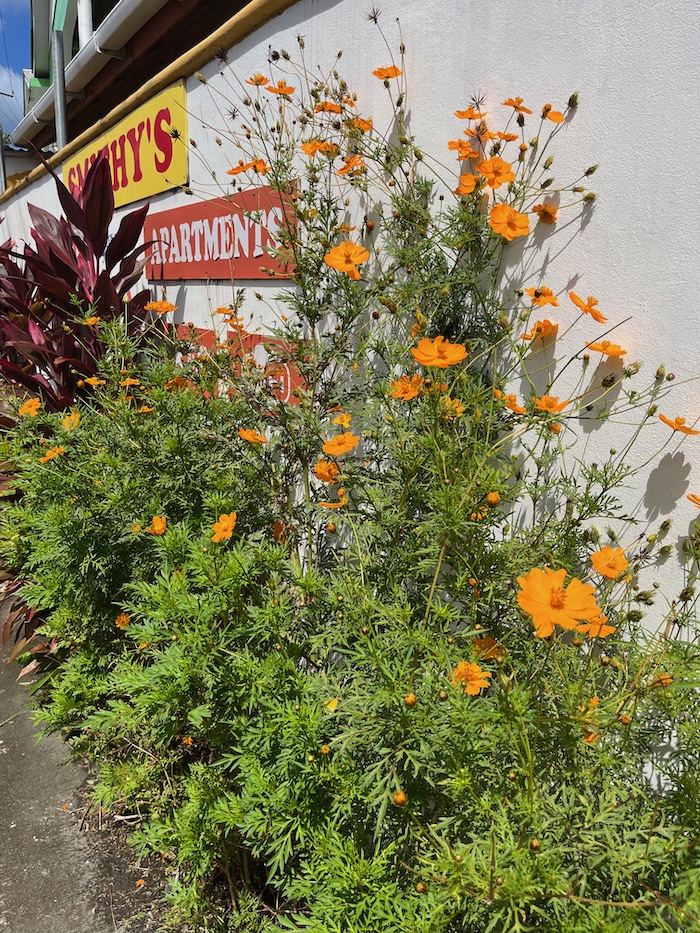A couple of weeks ago Rebecca Mezoff’s email newsletter mentioned that since she traditionally works at home, when she works ‘remotely’ it means that she has traveled somewhere. It’s the first time that I realized I work remotely every winter. Many people think Bob and I are on vacation when he sails south for the winter, but it’s really our ‘other’ home. We live our every day lives, full of chores and responsibilities, from our 2nd home, which happens to float. I always bring ‘work’ with me, and am often disappointed that I’m missing some vital color for a tapestry, or a particular size of knitting needle, or some other item that derails for my plans for work. At my first home I can quickly go online and replace almost anything I’m missing within days. That is never the case here. This is a view from Shirley Fort overlooking Portsmouth Harbor. Pandora is out there!
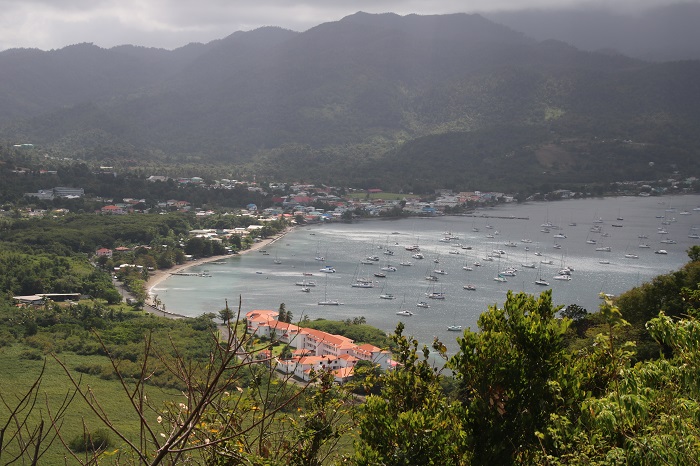
We are in Dominica now, and have been moored in Portsmouth for the past four days. Bob’s sailing group has arranged for an impressive number of outings on this island, known as ‘the nature island.’ Most of Dominica is rain forest. Most of the hikes here involve hiring a guide. Perhaps the most intensive hike on this island is called the ‘hike to the boiling lakes.’ This hike, which I have not done and Bob regrets not doing, takes people to the edge of the volcanic caldera where the sulfur lakes are literally boiling. It’s not easy getting up to those heights, and this week’s trip was particularly hard for the hikers because it rained most of each day in heavy downpours, which made the paths and rocks quite slippery in addition to being quite steep. The hikers walked along the steep rock walls of three caldera that looked down into the boiling lakes.
From Wikipedia: The Boiling Lake is a flooded fumarole located in Morne Trois Pitons National Park, a World Heritage Site on the island of Dominica. The lake, located 6.5 miles (10.5 km) east of Dominica’s capital Roseau, is filled with bubbling greyish-blue water that is usually enveloped in a cloud of vapour. The Boiling Lake is approximately 200 to 250 feet (60 to 75 m) across and is the second-largest hot lake in the world after Frying Pan Lake, located in Waimangu Valley near Rotorua, New Zealand.
In the rainforest people clear small plots to grow all kinds of veg and fruit, and the rest of the West Indies is indebted to Dominica when the supply boat arrives in the other islands carrying produce grown here. They even grown coffee here in the higher elevations. The melons and bananas are unbelievable! I’d forgotten what non-GMO avocados taste like, and these bring back memories of the first avocados I ever tried, as a teenager, years before Haas avocados had been developed. I’m a big fan of the real ones now. And, as it happens, there are numerous varieties of avocados. We’re about to try some that are quite tiny. The one thing I cannot find–and don’t even seem to know how to ask for–is cilantro! There is an herb grown on some of the islands called “chadon beni” that’s pronounced more like “shadow benny.” It does not look anything like cilantro, but it tastes like it! It roots easily, so I was able to grow my own the only year I found some to buy.

I know that some cultures call cilantro ‘coriander,’ which is what I call the seeds of the cilantro plants. At the local Saturday market here in Portsmouth, I tried asking for cilantro, coriander, and ‘shadow benny,’ but I got no hits. I even had an image of chadon beni open on my phone for clarification. The only response I got was an offer of some flat leafed parsley! Oh well. I can’t make the guacamole of my dreams, but I am enjoying eating avocados in other ways, including the way I first ate them in junior high school, with canned tuna salad stuffed into the place where the pit was removed in the big avocados! And when you root one of these avocado plants you will get fruit on your tree, unlike Haas, which are sterile. I am making do quite well with a healthy, rooted Caribbean version of basil which is growing like it’s on steroids.


The entire Caribbean is a colorful world, as Bob captured in the fishing fleet on the dock.
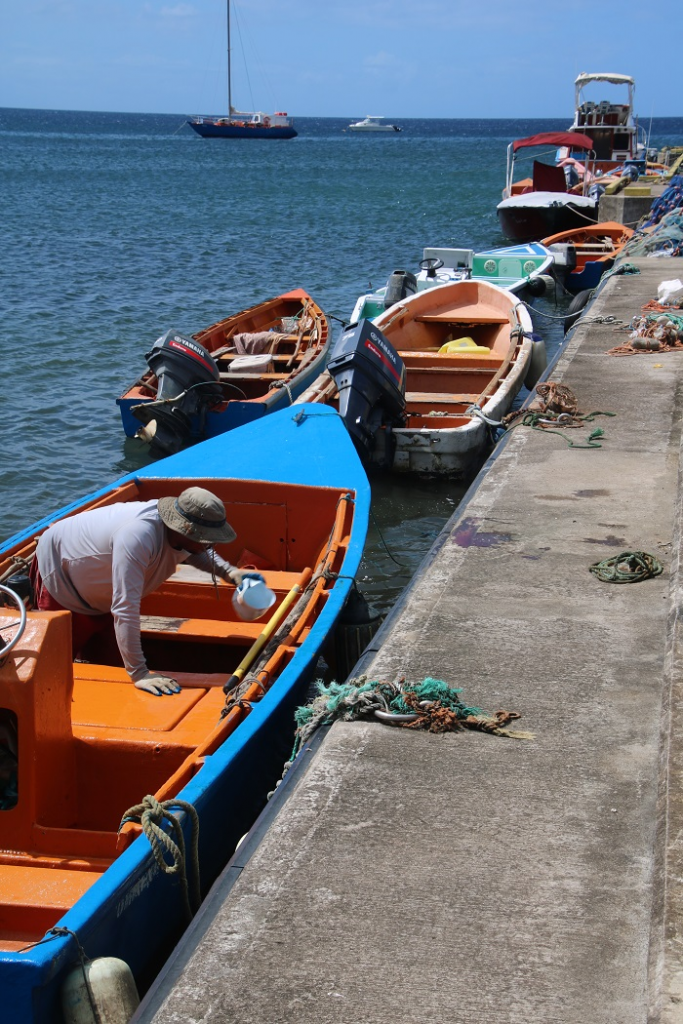
At the moment I am licking my emotional wounds that I have a major set back on my Caribbean ‘postcard’ tapestry. I don’t have any white or cream weft yarn to weave the iconic church in Deshaies, Guadeloupe. I have other options, you know, necessity being the mother of all mislaid plans. I can weave a different scene from Guadeloupe to eliminate this church entirely. I’m feeling a bit negative about that since drawing the rough cartoon was quite an effort for me, with no option to resize some of my images with a printer, or even stopping into a Staples store for help. In the end I have four pieces of paper glued together to create my cartoon, and it has angel fish and turtles swimming around the postcard of the church. I just continue ‘to sleep on’ the idea of tossing out this idea.
So I’ve turned to my current sweater in progress, a design by Ainur Berkimbayeva for Purl Soho called “Amphora Pullover.” It is a top/down sweater with fun increases through the neck and shoulders that create swirls. Quite attractive on the model! Now that I have put the sleeve stitches on holders and am about to continue on the body only, I am going to test some ideas of continuing some of the swirls to create a swing style body. I can never just knit a design as instructed. Patterns are jumping off places for adding our creativity to a garment! I hope my idea works.
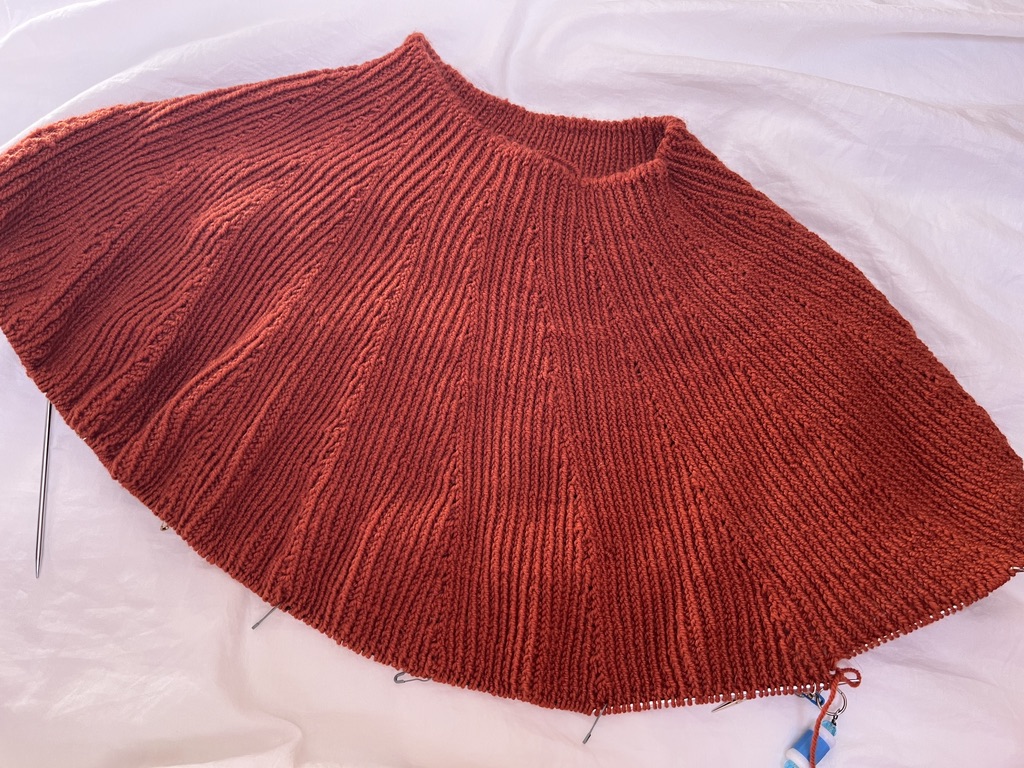

Looks like I have an opportunity to start my own small business here in Dominica!
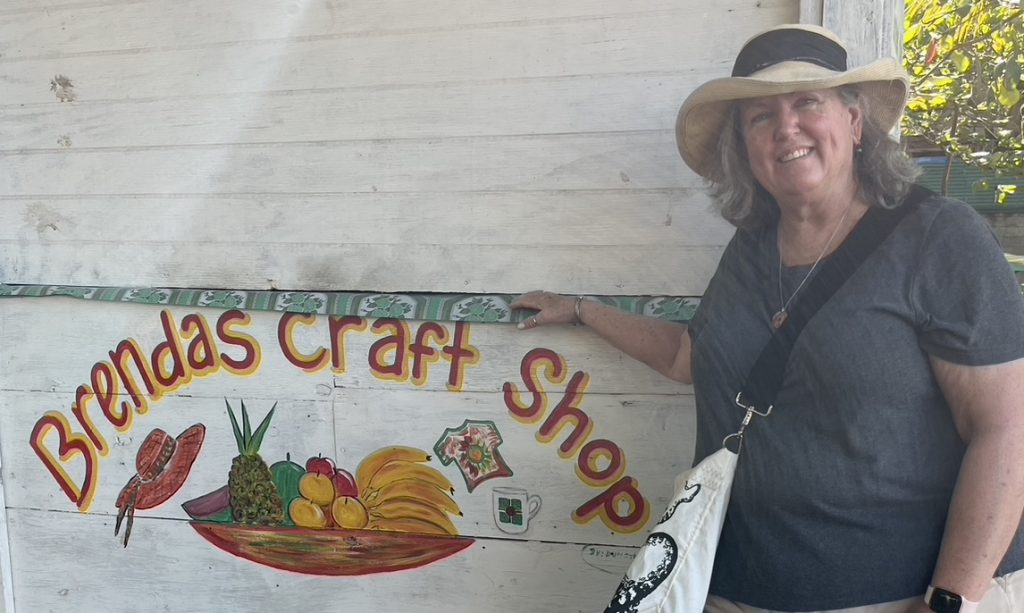
During the past week I have been challenged by an exceptional idea that is currently keeping me awake at night, with all kinds of possibilities running wild through my mind. If you don’t know me, you may not know that I have recently begun teaching tapestry at a non-profit organization in Connecticut that is near and dear to my heart. The organization is Hartford Artisans, and their mission statement is what captured my attention: The Hartford Artisans Weaving Center is committed to being a welcoming, accessible community that actively works to create a kinder and more equitable world for everyone. Our diverse community unites people from different backgrounds and experiences to learn from each other and uncover their own unique skills. We challenge assumptions about disabilities and aging and show that everyone deserves an opportunity for creative expression. We recognize we have a responsibility not only to open our doors wider, but also to understand and work to change the racial and gender inequities that hurt us all.
The director of this organization recently got a letter from a blind weaver in the Southwest, asking if there were any audio sources for learning to weave tapestry. I have done a preliminary search and found nothing. Yet there is one weaver out there who wants to do this. There is, or was, a weaver at the Artisan Center who wove a tapestry that hangs on display in the hallway. I don’t know whether that weaver is still with the Center, but if so, I’d like to her/him. The piece is more texturally interesting and is not based on imagery. It has striking merits. As we all know, there is no one way to describe or view tapestry, and no one correct way to achieve an idea. While I was thinking through ideas, Bob googled textured tape to see if there is a tape that has bumps or some kind of measurement device done in texture rather than in visual marks. By Jove! There is! I thought about how to describe the process of making an Archie Brennan copper pipe loom without any visuals, how to describe the seine twine I’d recommend for the first few warps, and at some point, how to describe various techniques. I thought about describing the warping process in words only. Are you now thinking too? If so, I hope you’ll get in touch. Creativity should be accessible to all people, and it falls to some of us to make this happen. In the meantime, I’m going to proceed, hopefully talking to some of the visually impaired artisans about what kind of instructions make the most sense to them. I am hopeful.
I’m looking forward to getting back to my ‘real’ home, my first home, where I can be more connected and less remote! I’m halfway there: six weeks to go! And it will be almost time to garden again.
